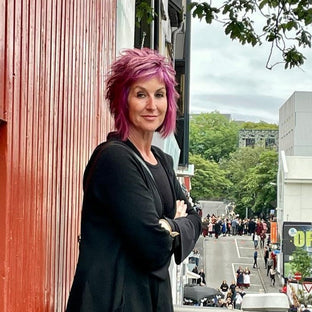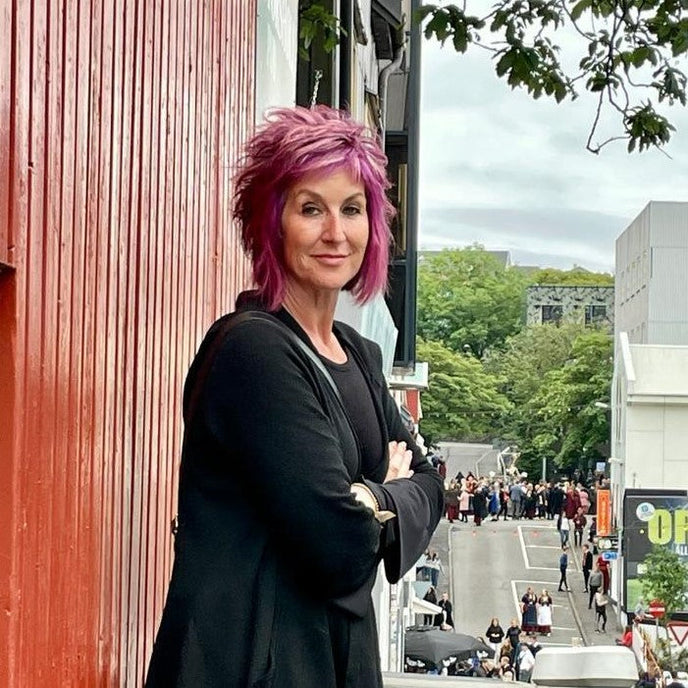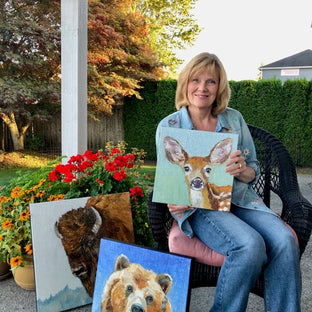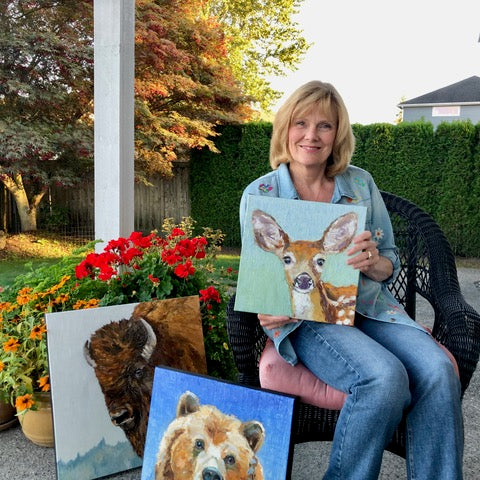A Creative Interview With Artist Benjamin Thomas
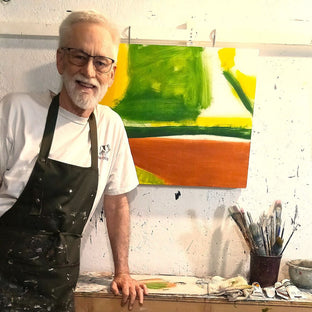
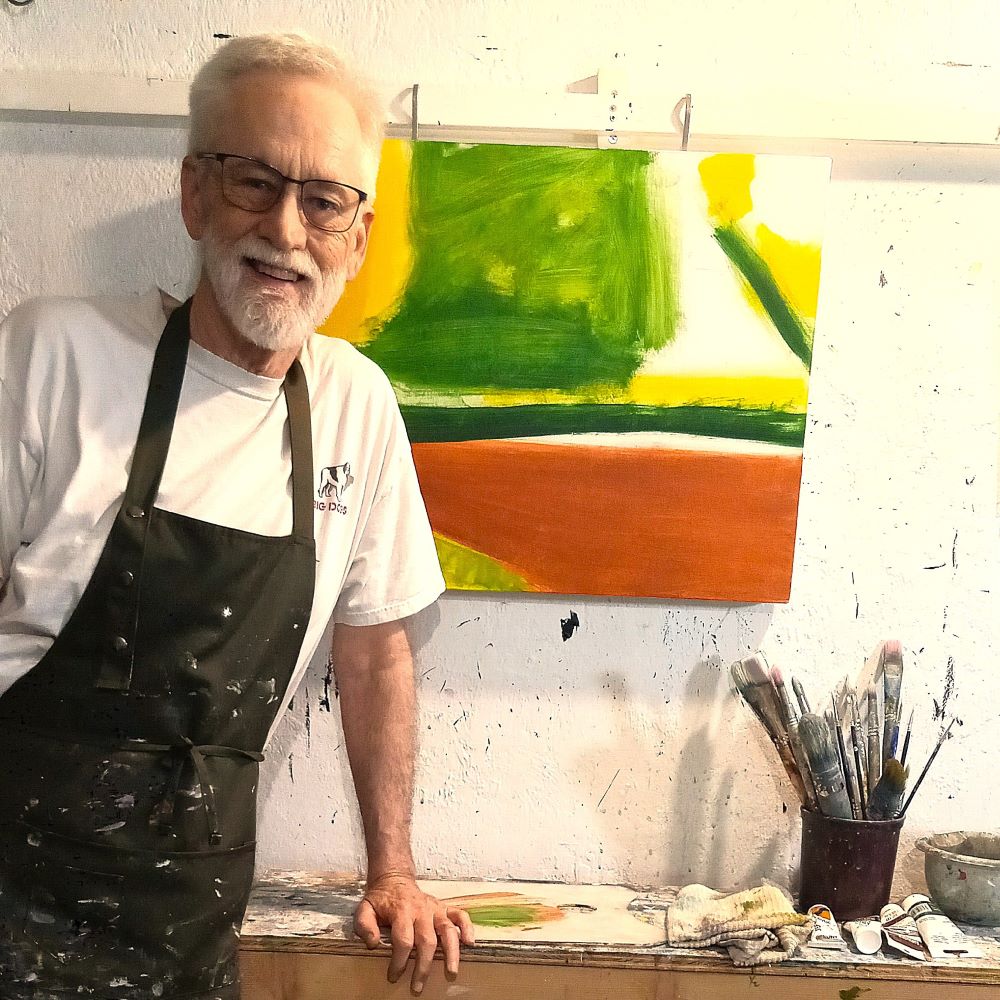

"In my deep regard for our planet and the escalating concern for its health, my art has gravitated to a focus on our environment. In particular, the atmosphere, the most powerful element for us humans, the sky above our heads."
Artist Benjamin Thomas paints atmospheric compositions, blending abstraction and realism to capture his emotional interpretation of a scene. He began painting in the late 1970s but did not exhibit his works for many years until his wife urged him to approach a gallery owner. With her support, Benjamin began showing his work to the public and continued to build his practice ever since. Despite decades of creative experience, Benjamin still feels like a student eager to expand his knowledge. He paints in a small studio in his brick colonial home, away from his phone, the TV, and computer. When not making art, Benjamin enjoys cooking pizza for his wife and tending to their garden.
Please tell us about yourself. What’s your home life like? What are your special interests?
I live with my wife of forty years in Pittsburgh, PA, a home surrounded by a sanctuary shared by suburban wildlife and a pollinator-loving garden, in which we invest much of our "free" time. Besides our art endeavors and gardening, other interests include reading, political activism, health, and staying physically active and fit.
What are you most proud of—whether in art or another part of your life?
I find a sense of satisfaction in my paintings that draw attention to our fragile planet, hoping that my modest effort may help to protect it from the harmful effects of human unawareness, inattentiveness, or disregard. In a related effort, my wife and I have worked in our Pittsburgh communities to help people obtain affordable healthcare for themselves and their families.
Do you have any studio rituals that help you get into a creative flow?
I try to organize my studio space the night before. To begin the day's painting session, I first clean my palette. This helps clear my mind to a fresh response to the work from the day before, which hangs on a blank wall with a workbench beneath it. To sustain a focused mindset, I work standing with my back to the rest of the room, no technology at hand, and most often with the door closed.

How do you structure your day?
I'm usually up early with a mug of coffee, while I indulge in what I call "long thoughts." Then a forty-minute walk and stretching. My wife and I usually have a small breakfast while we read, discuss our reads and the news, and address any house or garden projects that need attention. I then go to my studio, and for the next several hours, I focus solely on art making until my feet get too tired. I eat lunch, then back to my studio until the next break around four in the afternoon. On some days—especially during hot weather—we might change the order and use the morning for a bike or motorcycle ride to breakfast or lunch, then come back and get into art making and our home and garden jobs.
Where do you find inspiration for your art?
Inspiration can strike anywhere; it just takes my paying attention in the moment to what's right there in front of my eyes—or, in the case of my sky paintings, above my head. Ideas, impressions, and inspiration strike locally as well as when traveling to new locations, looking at others' art, talking with people in general, reading, and even watching a movie or TV. Even "non-art" activities like biking, motorcycling, or my daily walk—everything seems to offer a springboard for ideas, themes, images, sometimes even technique. A lot of times, I get an image in my mind's eye long before I start to work.
Tell us about your evolution as an artist.
I started making various kinds of art in middle school, then got excited by pottery in high school. I earned a BS in Art Education, which prepared me to teach art to high school students for 35 years. Initially, in my personal work, my paintings—mostly figures, portraits, and landscapes—were based on realism. As I became more aware of the environment, I realized that the natural world held a kind of innate quality of abstraction that lent the image or scene a certain atmosphere or mood, a subtle impression of underlying emotion. That recognition has become the inspiration for what I hope to achieve in my paintings.
How do you decide when an artwork is finished?
I'm rarely certain that a work is finished. I turn the painting to the wall to keep it out of view for a while. I may revisit previous paintings to consider elements in them that might better accomplish or enhance my intention for the current work, such as more color, different shapes or sizes, heavier paint, larger or smaller brushstrokes, etc. At that point, my editor wife and key critic has no problem sharing her take on what needs to be tweaked. Sometimes, this more objective perspective, as well as learning something along the way, leads me to rethink the work's finality. A definite "finished" is my signature on the painting, as well as its showing in a gallery or museum.
What is the most interesting observation someone has made about your work?
A question asked at a luncheon talk I gave at Southern Allegheny Museum of Art: "What the hell is that?"' The painting, Hounds in the River Styx, was my very first attempt at merging the real and the abstract. The use of abstract technique, I felt, imbued the work with an emotional, discordant, and dark tone that a fully realistic image of rock and gushing water would not evoke. What I learned from that viewer's response is that sometimes, too much abstraction can undermine the artist's intention for a work and confuse the audience, keeping them from understanding or relating to the subject or scene.
Is there an artwork from another artist that has had a significant impact on you?
I have always been impressed and inspired by works that hold the viewers' attention beyond the moment; works that pose questions, especially in regard to how artists apply their unique craft to structure, color, texture, and light to create intended effects like theme, mood, and emotional tone. Such a work, discovered during my undergrad studies in Europe and still with me all these years later, is Pere Tanguy by Vincent Van Gogh in the Rodin Museum, Paris. Van Gogh's skill at fusing realism with the abstract renders a singular portrait that captures the very essence of the man, his tranquil, contemplative nature, the serenity for which Van Gogh was reported to be searching for himself. That atmosphere and emotional tone may be the most difficult part of a work to capture, and it demands special attention when we find it.

What’s your favorite museum?
Museums that have shown my work are, of course, favorites, including local venues like South Allegheny Museum of Art (SAMA), the Westmoreland Museum of American Art, the Butler Institute of American Art, and Art of the State in Pennsylvania. The Carnegie Museum of Art in Pittsburgh is also a favorite. If I had to pick just one, it would be between the Rodin Museum in Paris and the Tate Gallery in London. Both of these galleries offer eclectic collections of cultural periods and their artists' distinctive subjects, themes, styles, and the craft employed for the effect they intended.

Is there anything else you’d like to share to help viewers better understand your work?
In my deep regard for our planet and the escalating concern for its health, my art has gravitated to a focus on our environment. In particular, the atmosphere, the most powerful element for us humans, the sky above our heads. The dominant force of our existence, when you stop to think about it, and the most visibly accessible to us human creatures, who are so mindlessly dependent on its power, seems to be taken for granted, even as it reshapes the landscape and the lives of all creatures beneath it.
But whether we accept the reality of its fragile nature or not, we, just like the pollinators who visit our garden—and all Earth's creatures—depend on our sky, the crucial balance of its delicate but formidable power, ranging from fair to foul, from comfort to chaos, from delight to devastation, often heavenly and hazardous in almost the same breath.
Discover more artist features on UGallery
If you enjoyed this article about Benjamin Thomas's life and artwork, we recommend reading about Jesse Aldana's atmospheric cloud paintings.


